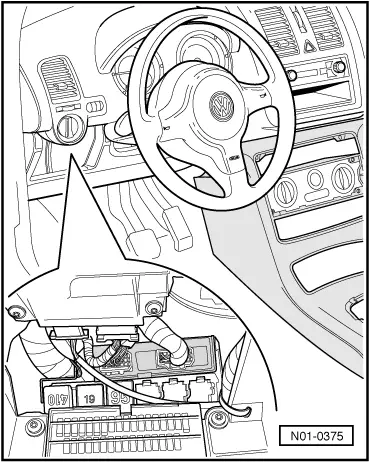Polo Mk3
|
Self-diagnosis for convenience system
Functional description
The central locking operates pneumatically. The locking units located in the doors (door locks) have positioning elements, which are controlled by a dual pressure pump. The positioning elements lock the doors. After locking at an external lock (door lock, tailgate, radio remote control) the vehicle is protected against theft. The feedback on the respective condition in the control unit occurs via the contact switch in the locking unit. All the known convenience functions can be performed with the electric convenience system, interior lights control, ATA with interior monitoring (see description of system on page 01-158 ), electric windows, mirror and the radio remote control. If the airbag control unit is triggered, a signal is sent to the convenience control unit to unlock the doors. |
 |
|
|
→ The convenience system control unit (J393) is located under the dash panel and is secured with a bracket above the central electrics. It is equipped with a fault memory. The self-diagnosis connection is located in the centre console. The control unit recognizes faults and malfunctions in the central locking convenience system (convenience system includes central locking, anti-theft alarm, radio wave remote control) and stores them in a non-volatile memory. Testers V.A.G 1551 and 1552 can be used to interrogate the fault memories and code the control units as well as the function self-diagnosis of the VAS 5051. The fault information displayed is used to refer to a fault table with notes on the possible causes for directed repair measures. Faults which can be attributed to a temporary open circuit in the wiring or a loose contact, will also be stored. These faults will be displayed as sporadic faults "SP". Only statistical faults are considered:
Note: Before changing a component erase fault memory, perform functional checks and interrogate fault memory again. |
